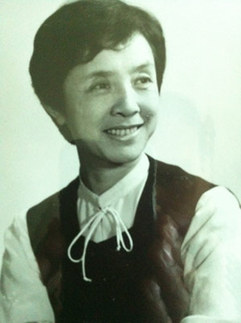Pioneer of Indian dance in China bows out
Updated: 2012-01-16 19:00
(chinadaily.com.cn)
|
|||||||||||

The artist who first brought Indian classical dances, Kathak and Bharatnatyam, to Beijing --- and trained hundreds of Chinese performers of Indian classical dance --- is now no more. She was struggling from cancer and underwent surgery four times before dying at the age of 78. She breathed her last in her Beijing apartment on Jan 4. The entire Indian community in Beijing joined the mourning of her death, paying homage to her for her life-long contributions to Sino-Indian cultural exchange. Her friends and the people she trained with in India expressed a deep shock over her loss.
Madam Zhang Jun was officially ranked as China’s national top-class performer and regarded as a pioneer of Indian dance in Modern China. In India she was known to her friends as Shanu, the name given to her by the Indian dance guru Pandit Birju Maharaj. Shanu, along with Manu (Liu Youlan), were one of the first Chinese dancers to learn Indian classical dance in Delhi and Ahmedabad. She has performed to mark the visits of several Indian dignitaries in China, including the 1988 visit by then Prime Minister Rajiv Gandhi.
Shanu was exposed to Indian dance for the first time when she visited India with a cultural delegation in the year 1954. Before they departed for India, Premier Zhou Enlai met all the performers, including Shanu, saying the following words: “India is an old civilization and very rich in cultural and art, therefore you all should learn their culture and dance from the heart.” Shanu found the instruction inspirational and applied it, both while taking dance lessons as well as teaching her students in China.
Later in 1957, Pandit Uday Shankar, the great Indian dancer, visited China as part of cultural exchange. Shanu managed to come close to him and took some dance lessons from him in Beijing. She always wanted to travel to India for a systematic training under the guidance of a famous guru. But the deteriorating Sino-Indian relations left her dream unfulfilled. Finally, she went to learn classical Indian Dance in the year 1980, on an Indian Government scholarship program, along with another Chinese dancer, Ms. Liu Youlan.
In Delhi she took Kathak lessons from Pandit Birju Maharaj. On learning of her death, the dance master recalled on the phone, “Shanu was one of the best foreign students, along with Manu, that I had the opportunity to teach.” She was very devoted to her guru and used to make vegetarian Chinese soup for him in her dormitory. “Shanu picked up in a year what students on an average take five-six years to learn. Once she had hurt her leg but resumed dancing only after a week,” said her dance master.
She also took lessons from the famous Indian dance guru Mrinalini Sarabhai, in the city of Ahmedabad. Here too she completed a course in Bharatnatyam, that would normally take five to six years to master, in just 100 days. Shanu recalled later that both her Indian gurus liked her very much and that it would not have been possible for her to learn so much in such a short time without their cooperation. She devoted all her time to her passion for Indian classical dance during her stay in India without ever taking a break.
Her friends in Beijing recall that there was a huge craze for learning Indian dance in the 1950s, but the trend declined with the souring of India-China relations. But Madam Zhang Jun remained one of the best exponents and teachers of Indian dance in Mainland China. In her later years she was disappointed with the quality of dancing in Bollywood movies. In 2009 she told a journalist from Hindustan Times, “I don’t like modern Indian movies”.
In the last 20 years Madam Shanu returned eight times to the country she loved. I had the chance to meet her in New Delhi. At that time I could barely speak Chinese. She invited me to translate for her in New Delhi’s famous Kamani Auditorium. She was leading a delegation of more than 50 beautiful girls form the Chinese Oriental Academy of Music and Dance. She was invited by the Indian Council for Cultural Relation to mark the 50th Anniversary of Sino-Indian Diplomatic Relations.
In China she continued to perform and teach at the Oriental Dance and Music Academy and also at the Beijing Dance Academy. She had taught Indian classical dance to more than three generations and took a special interest in teaching young girls. Her performances created a cultural bridge between India and China. Her dance came to symbolize the friendship between the two great cultures of Asia. The cultural counselor at the Indian Embassy, Mr Arun Sahu, said, “She was not only a daughter of China, but also that of India. Lets us hope that her legacy will be carried forward by her young disciples and inspire the growing cultural bond and friendship between the two largest nations on this planet.”
With her passing away, both China and India have lost a great dancer, teacher and cultural envoy. It marks the end of an era in Sino-Indian cultural exchange.
Binod Singh teaches at Beijing Foreign Studies University and may be reached at binod@126.com